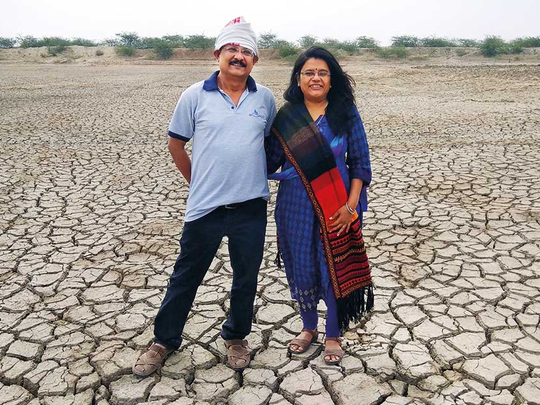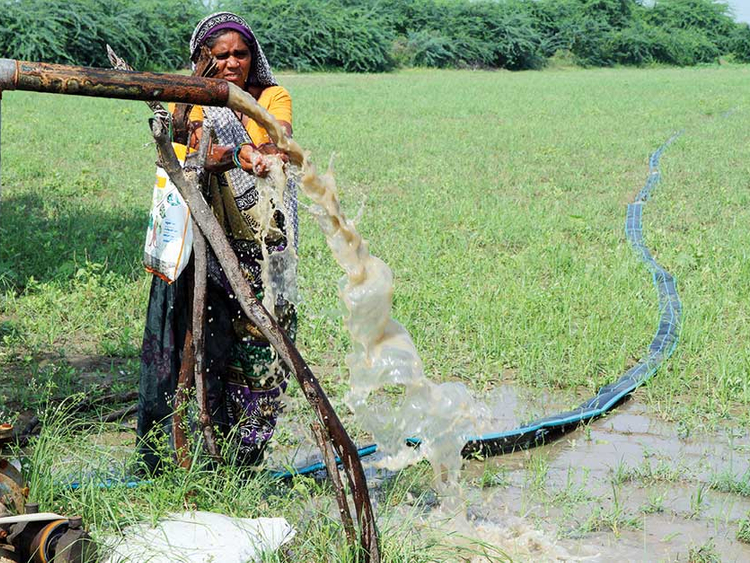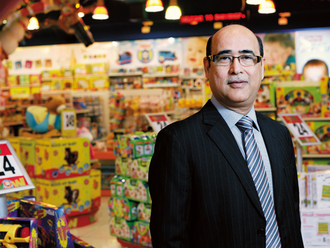
Come summer, farmers in India begin to dread another crisis of parched earth and poor harvests. In dusty and hot states like Gujarat, Maharashtra and Madhya Pradesh where temperatures can soar over 40˚Celsius, inadequate rainfall leads to a severe water crisis and drought, and when monsoons arrive farmers wade through water-logged farms and flooded regions.
“Both contrasting situations are highly detrimental, especially for poor smallholding women-headed households,” explains Trupti Jain, an environmental engineer, in an interview with Weekend Review. “Trapped in a vicious debt cycle due to a lack of food, families are forced to become bonded labour or migrate to cities to work as labourers at construction sites. Most of these farmers are left cashless and cropless.”
Having observed rural women struggling to make ends meet, Jain, who worked in the government sector, quit her job and joined hands with her husband, Biplab Paul. In 2011, they founded Naireeta Services, a social enterprise that provides a sustainable solution for drought and flood-affected farmers, by using bhungroo (‘straw’ or ‘hollow pipe’ in Gujarati). The bhungroo technology is a water-management system that enables rainwater to be filtered, injected and stored underground to be used during dry spells.
Jain’s development work spans several countries in South East Asia and Africa. In recognition for her work, she recently won the Cartier Women’s Initiatives award, an international business competition that aims to encourage women entrepreneurs to solve global challenges. She began working in Gujarat, where, like in many other states, farmers were often compelled to commit suicide due to the hardships they faced.
“My purpose was to solve climatic crisis issues of farmers and save them from debt, poverty and insecurity,” Jain says.
Exceprts:
What led to the invention of bhungroo?
My husband, Biplab Paul, who is a native of West Bengal, settled in Ahmedabad, Gujarat, in 1995 and undertook a course in environmental education. As part of an NGO, he travelled around rural Gujarat and discovered the water issues of farmers and how their land was affected due to high salinity. Since it is very near to the desert areas, salt deposition is quite a common phenomenon in the region. The farmers could not grow crops during monsoons. Even though they had the land, they could not cultivate it due to lack of irrigation facilities.
So how is bhungroo manufactured?
The idea to store excess water underground and pump it out for use in the dry spells came to Biplab. With near zero scientific backup, he had to face many hurdles. The foremost was convincing illiterate and technology-averse farmers to try out his innovation. He sourced all materials locally, including PVC pipes and drilling equipment.
The traditional bhungroo is a hollow pipe through which women blow air to keep their open cooking stoves burning. It is a common fixture in villages, small towns and urban slums. Taking up an area of 1 square metre, the pipe is drilled up to 30 metres into the catchment area of fields. The system simply captures standing water during rains and results in freeing land from water logging. Also, as the fresh rainwater goes into the ground and mixes with the saline groundwater, the overall salinity of the land is reduced.
Biplab invented bhungroo in 2001 with an initial investment of Rs7.7 million (Dh415,400), and the first unit was installed in 2002 in Patan district of Gujarat.
How does bhungroo help the farmers?
Bhungroo serves small landholders. They can use the water for irrigation during the lean season. One bhungroo unit can accommodate 400,000 to 40 million litres of water and takes up a surface space of only one square metre. However, unlike shallow tube wells, which use up an exhaustible source of ground water, it has zero water footprint, giving back only what it takes in.
Water stored in one unit will be able to irrigate 22 acres of land for up to 30 years. Harvesting water for 10 days each year, it can supply water for over seven months. Thus, the technology makes it possible for farmers to cultivate crops round the year as opposed to only one season. Diesel pumps are used during winter to pull up the water. The technology has revolutionised the lives of farmers.
What initial difficulties did you face?
When we discussed with the farmers who had just about one acre of land, they did not believe that such a technology could exist. Moreover, because Biplab belonged to West Bengal yet was working in Gujarat’s rural heartland; they thought he was there to swindle them of their money. Only when they finally saw him get on with the drilling were they convinced of his seriousness. Still, they refused to be part of it.
Fortunately, the self-help groups of rural women were more forthcoming. That’s where I joined in. But I had to face a lot of opposition from the men folk who were particularly against bhungroo being centred around women. Since men were migratory, they had little knowledge how women coped with a water crisis. It took a few years for them to relent. On top of that, people with vested interests opposed the idea, believing we were there to break their monopoly and land-capturing conspiracies. The credit goes to groups who helped us break the nexus and start operations. Ever since, we have been training and empowering women to run and monitor bhungroo.
What influenced you to make the device women-centric?
Water sharing was a big issue. One unit serves five to six farmer families. But if water was not shared properly, the technology would become redundant. So the decision was taken to give the rights of bhungroo to women. In no time, not only was the issue resolved, as they are better at managing, but it also made them self-sufficient.
At least five poor women smallholders enter into a pre-agreement that they will jointly manage their bhungroo, share irrigation water and contribute to labour in each other’s lands. With the reigns in their hands, women have mastered the engineering concepts involved in this technology and there’s no looking back for them.
But I do feel sad about the fact that even though women are a crucial part of the agricultural sector in India, in terms of both labour and indigenous knowledge about cropping patterns, they are not recognised by society. My aim now is to get their contribution recognised, as by empowering women, we have seen impoverished farmers become self-sufficient.
After how many years of toil did you sense the turnaround and got recognition for your work?
It happened after Biplab won the World Bank India’s Development Market Place Award in 2007. A year later, the Gujarat Commissionerate of Rural Development, in collaboration with Japan Fund for Poverty Reduction, pooled in a grant of around Rs10 million to help 500 poor farmers using bhungroo technology. Subsequently, things fell in place.
How many Indian states have benefitted until now? And what is the number of units installed?
Naireeta functions across Gujarat, West Bengal, Tamil Nadu, Andhra Pradesh, Telangana, Madhya Pradesh, Karnataka, Bihar, Jharkhand, Maharashtra and Uttar Pradesh. But bhungroo now has a presence even in Vietnam, Bangladesh and Ghana. All materials for its development are obtained from the host country. Outside India, we are only piloting the projects in partnership with local institutions and training them. Our intention is not to have offices there. Until now, a total of 247 units have been installed in India and seven in other countries by Naireeta, and more than 3,500 units by our associates, partners and trained local animators.
Do designs differ for various regions?
At present, 17 designs are available for diverse communities within various agro-climatic zones. Bhungroo can be erected at the local level and does not require factory operations. Depending on the environment, the design needs to be changed to increase efficiency.
What is the cost of one unit?
We charge big farmers; for poor, the technology and installation is free. But they have to provide land, labour and raw material. Each unit costs $13,000, depending on the design. Ever since the project was incorporated into the Ministry of Rural Development’s National Rural Livelihood Mission programme, it has got a fillip. This means, states can allocate the budget to this technology under the state head. An open source technology, bhungroo is registered under trademarks.
Where do you see bhungroo in the next five years?
We expect it to transform the lives of several thousand rural poor by helping them access life-long food security and significantly boost their income. More than the number of units we install, it is important how much area we are able to cover. It should benefit at least 500,000 farmers. For that, we hope to enter into partnerships with like-minded agencies from across the world. The one positive factor that we have is Indian government’s support in promoting bhungroo.
Nilima Pathak is a journalist based in New Delhi.













